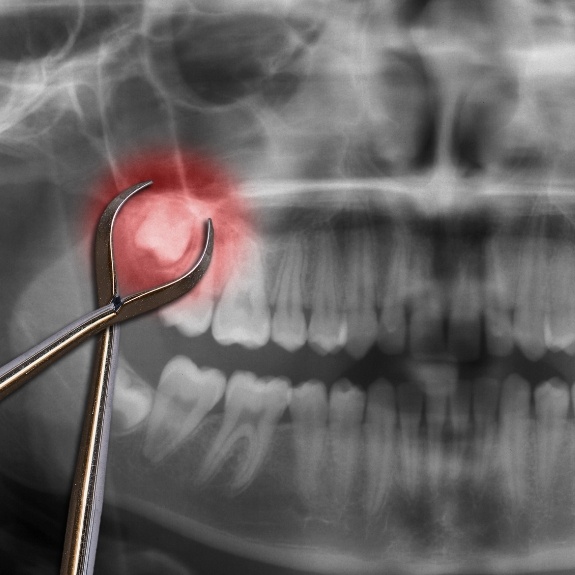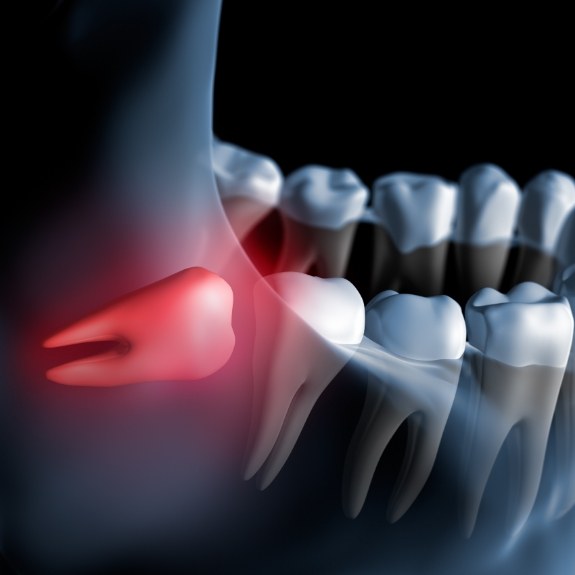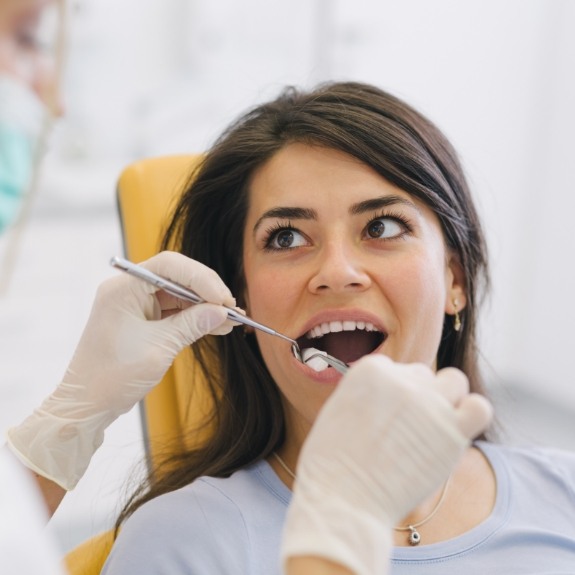Wisdom Tooth Extractions – Cranford, NJ
Saying Goodbye to Your Third Molars
Wisdom teeth removal is often considered a rite of passage for patients between the ages of 16 and 25. When these teeth in the back of your mouth attempt to erupt, they often only make it partially through the gums or not at all, remaining impacted beneath the gumline. This common occurrence can result in intense pain and damage to nearby tooth structures if left untreated. However, our specialists are here to safely and comfortably remove these unnecessary teeth to ensure healthier smiles in the future. Call us today if you or a loved one needs wisdom tooth extractions.
Why Choose Cranford Center for Periodontics & Dental Implants for Wisdom Tooth Extractions?
- Detailed Treatment Plans with No Surprises
- Your Dental Insurance Is Welcome
- Board-Certified Periodontists with Decades of Experience
What Are Wisdom Teeth?

Wisdom teeth are also known as third molars. Once considered necessary to early civilizations because of their ability to chew and gnaw through dense foods, changes in diet and facial structure eventually led to these teeth no longer serving a purpose. But instead of them disappearing, they continue to try and erupt, which can cause much pain and damage to narrow jawlines.
Why Do Wisdom Teeth Need to Be Removed?

Not all patients require wisdom teeth removal; however, it is a common procedure among teenagers and young adults. Impaction, infection, and a high risk for decay and gum disease are just a few of the many reasons why we might recommend this service. By providing this type of treatment, we can work to mitigate future problems and damage.
What to Expect from the Wisdom Tooth Extraction Procedure

When preparing to undergo wisdom tooth extraction, our team will start by administering local anesthesia to ensure you remain pain-free throughout the procedure. If necessary, you can inquire about sedation dentistry.
Once you are comfortable in our treatment room, we will begin the process by performing either a simple or surgical removal. If the tooth has partially erupted through the gums, we will use specialized instruments to grasp the tooth and elevate it so that it can be rocked gently back and forth until it detaches from the underlying ligaments.
If the tooth is impacted beneath the gumline, we will need to make a small incision in the gums to expose the tooth. To remove it without causing much damage to the surrounding bone, we will likely extract it in pieces for easier removal.
Recovering from Wisdom Tooth Extraction

After your wisdom tooth extraction is complete, you’ll be instructed to gently bite down on clean gauze to help stop the bleeding. This process may take time over the next several hours, as blood clots must form in the sockets. You do not want to do anything that will cause these clots to dislodge, as it can result in a dry socket. This means you should not spit, rinse, smoke, or sip through a straw during this time.
You’ll want to return home to get plenty of rest and take over-the-counter pain medications as instructed. If we prescribe any type of antibiotics, you’ll need to make sure that you have them filled before your surgery so that you can begin taking them promptly after surgery.
You will also want to make sure you are sticking to a liquid diet for several days before transitioning to soft foods. Once your mouth begins to heal and feel normal, you can begin incorporating denser foods into your diet again.

